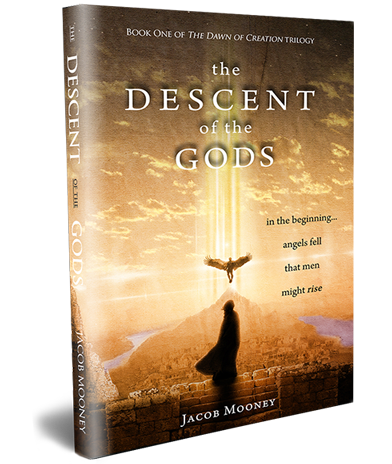
Genesis 6:1-4 presents a perplexing narrative about the “sons of God” and the “daughters of men,” leading to the birth of the Nephilim. This passage has intrigued Jewish scholars for centuries, resulting in diverse interpretations and debates. In this piece, we explore how Jewish Bible scholars have grappled with this enigmatic passage, drawing from a variety of ancient texts, rabbinic literature, and modern scholarship.
The Biblical Account and Its Ambiguity
The Genesis account is brief and enigmatic: “When men began to increase on earth and daughters were born to them, the divine beings saw how beautiful the daughters of men were and took wives from among those that pleased them” (Genesis 6:1-2, NJPS).
This passage is followed by a mention of the Nephilim, described as “the heroes of old, the men of renown” (Genesis 6:4). The narrative does not explicitly connect the Nephilim to the union of the “sons of God” and the “daughters of men,” leaving room for varied interpretations.
Early Jewish Exegesis and Second Temple Literature
Second Temple period literature, including the Book of Enoch and the Book of Jubilees, offers expanded interpretations of Genesis 6. These texts depict the “sons of God” as fallen angels who descended to earth and married human women, leading to the birth of giants, the Nephilim.
In the Book of Enoch, the fallen angels, called Watchers, are led by Semihazah and Azazel. They teach humans forbidden knowledge, leading to widespread corruption and prompting divine punishment through the flood. The Book of Jubilees echoes this narrative but emphasizes the genetic corruption resulting from these unions, contributing to the proliferation of evil on earth.
Rabbinic Interpretations: Suppression and Reinterpretation
Rabbinic literature from late antiquity often rejects the angelic interpretation of the “sons of God.” Rabbi Shimon ben Yochai, for instance, curses those who interpret the “sons of God” as angels, suggesting instead that these were human judges or nobles. This reinterpretation aligns with a broader rabbinic trend to demythologize biblical texts and distance Jewish theology from pagan myths.
Rabbi Ishmael and other sages propose that the “sons of God” were indeed human but were corrupted by their elevated status. The midrash in Genesis Rabbah describes them as judges who abused their power, taking women by force. This interpretation emphasizes moral and social corruption rather than supernatural events.
Medieval and Modern Jewish Perspectives
Medieval Jewish scholars such as Rashi and Ibn Ezra continue the rabbinic tradition of non-angelic interpretations. Rashi, for example, identifies the “sons of God” as descendants of Seth, who became corrupt over time. Ibn Ezra, however, acknowledges the angelic interpretation but leans towards a symbolic understanding of these beings as powerful rulers.
Modern Jewish scholarship often revisits these ancient texts with a critical eye. The late biblical scholar Umberto Cassuto argues that Genesis 6:1-4 serves as a polemic against Near Eastern myths, reducing the grandeur of demigods to mere mortals whose lifespans are limited by divine decree. This view sees the passage as a rejection of pagan immortality myths and an affirmation of human mortality.
Reintroducing the Myth in Contemporary Times
In recent times, scholars like Prof. Rabbi Rachel Adelman have reexamined these ancient myths, recognizing their enduring influence on Jewish thought and culture. Adelman highlights how later Jewish texts, such as Pirqe de-Rabbi Eliezer, reintroduce and expand upon the myth of the fallen angels, linking it to themes of sin and redemption. This resurgence suggests a complex interplay between suppression and preservation of mythic traditions within Judaism.
Conclusion
The interpretation of Genesis 6:1-4 has evolved significantly over time, reflecting broader shifts in Jewish theology and cultural context. From the ancient exegesis of the Second Temple period to rabbinic reinterpretations and modern scholarly analysis, Jewish thought has grappled with the passage’s ambiguity and its mythic elements. Today, these diverse interpretations continue to inform and enrich Jewish understanding of the biblical narrative, bridging ancient myths with contemporary faith.







